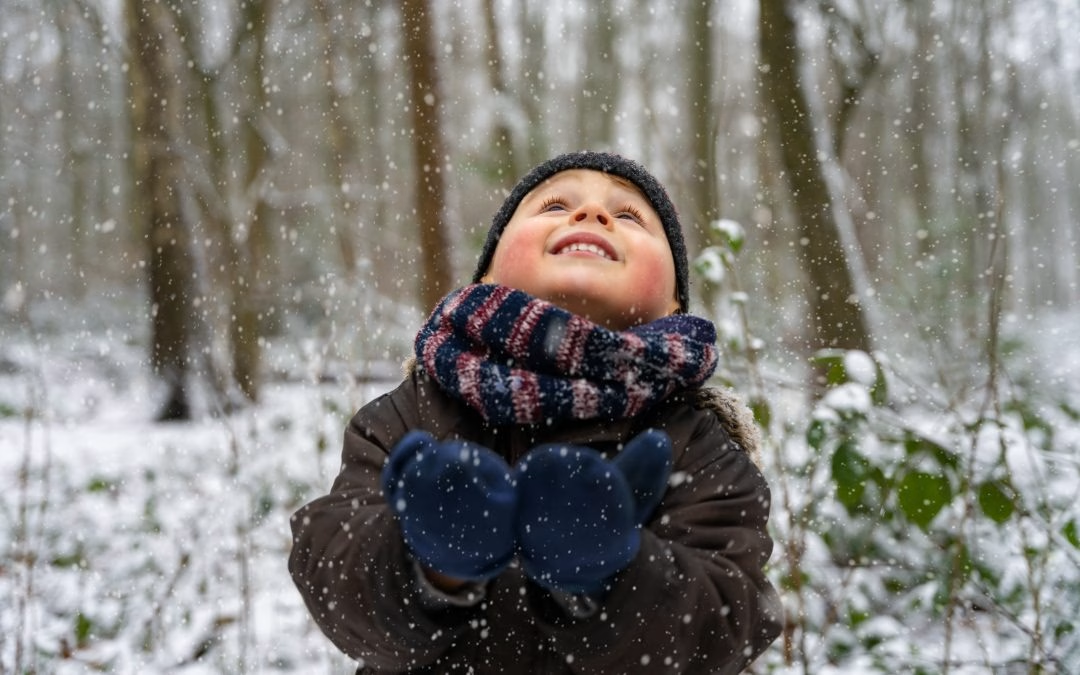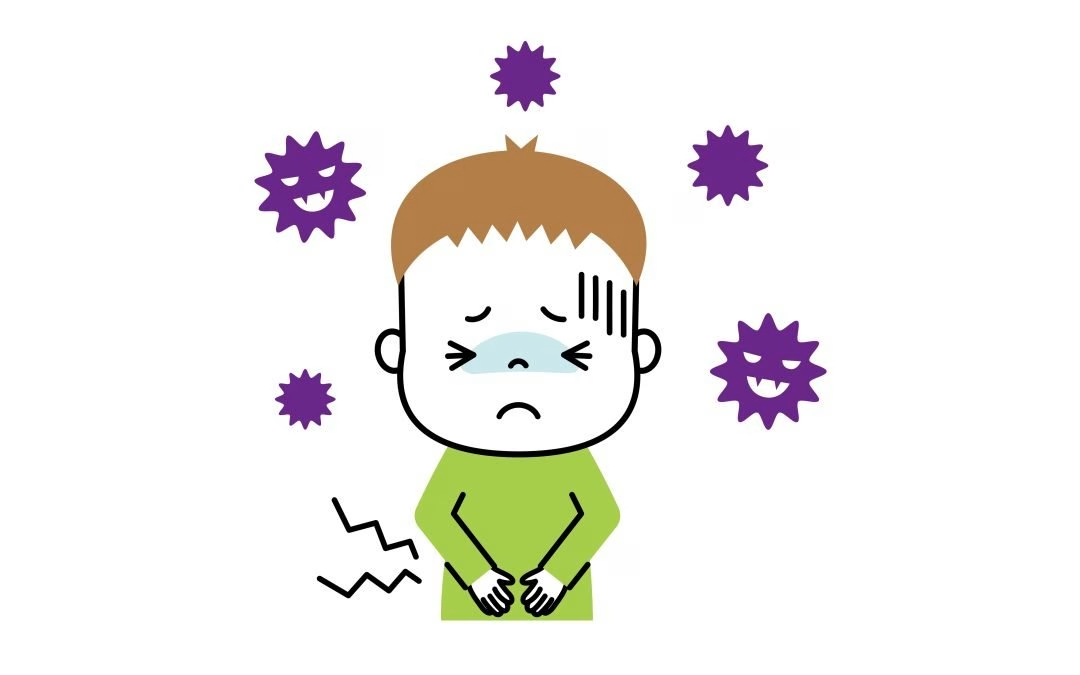by | Apr 14, 2024 | Family Health

Can Babies Have Seasonal Allergies?
Spring has sprung and the warmer air for which you have been longing has finally arrived! Your family celebrated the warmth and sunshine with a trip to historic Marble Springs a few days ago and opening the windows and doors in the mornings has become a favorite ritual. You have noticed that the baby seems less content and more congested, making you wonder if they might have allergies.
What Are Seasonal Allergies?
The term doctors use for seasonal allergies is “allergic rhinitis,” sometimes referred to as “hay fever.” Rhinitis relates to inflammation of the nose and its mucus membrane. It is the most common childhood allergy ailment.
Airborne allergens trigger a reaction in the eyes, nose, and throat causing mast cells to release histamines into the body along with other chemicals. Allergens are harmless by themselves, however, when a person has allergies, their body considers them a threat and begins to overreact by attacking them. The chemicals released into the body irritate nearby nasal tissue causing allergy symptoms. Allergic rhinitis can occur on either a seasonal or year-round basis.
Tobacco smoke and other strong odors can cause symptoms like allergic rhinitis, but they are irritants rather than allergens.
What are the Main Causes of Seasonal Allergies in Children?
The development of pollen-based seasonal allergies requires repeated exposure, over at least two seasons, before the body begins mounting an allergic response. Due to this, it is very uncommon for a child under the age of two or three to develop seasonal allergies. It is, however, possible for a child under the age of two to experience an allergic reaction to year-round allergens such as dust mites, and household pet dander especially if the child has severe eczema or asthma. Young children can exhibit allergy-like symptoms due to nasal dryness or a lack of indoor humidity, as the result of a viral infection, milk allergy, or enlarged adenoids. About 1 in 5 children have allergic rhinitis and 8 out of 10 children with asthma also have allergic rhinitis.
Another component of all allergies is heredity and proximity. Among children with no family history of any allergies, 12% will develop them. A child with a single parent with allergies has a 30- 50% chance of developing them and if both parents have allergies the child’s likelihood jumps to 60- 80%. That number is likely to increase as pollen seasons lengthen.
Common Causes of Allergic Rhinitis in Children:
- Pollen from trees, grass, or weeds
- Cockroach waste
- Mold
- Dust mites
- Animal dander
What Are the Symptoms of Seasonal Allergies?
Seasonal allergy symptoms are easily mistaken for cold symptoms if one isn’t familiar with the distinctions between the two. Seasonal allergy symptoms in children are like those of adults and, likewise, will worsen with increased exposure to the allergen.
- Possible seasonal allergy symptoms:
- Swollen and stuffy or runny nose with clear drainage
- Sneezing
- Itchy nose, throat, eyes, or ears (itching does not accompany colds)
- Nosebleeds
- Dark circles or creases under the eyes
- Sniffling, snorting
- Throat clearing (sore throats are most associated with colds)
- Red or watery eyes
- Rash or hives
- Children with year-round allergic rhinitis may also have these symptoms:
- Continual earaches or infections
- Snoring
- Mouth breathing
- Trouble with schoolwork
- A line or crease across the bridge of the nose from constant wiping or scratching of an itchy nose
Not every child will experience each symptom. Children with suspected or actual ear problems should see an allergist for testing and treatment because the inflammation from allergies can lead to fluid accumulation in the ears and affect hearing. Obstructed hearing in young children can cause poor speech development. Other causes besides allergies should be considered for eye and nasal symptoms in children under two years old.
How Can I Help My Allergic Child?
Do’s:
- Begin giving allergy medicine a couple of weeks before allergy season is in full swing and give it regularly throughout the season to help keep headaches, sinusitis, ear and sinus infections, and the exacerbation of any asthma symptoms
- Keep allergy eye drops in the fridge so they are extra soothing.
- Reduce exposure to pollen and other outdoor allergens by keeping windows and exterior doors closed.
- Wash bedding and vacuum floors regularly to keep those items free of symptom-causing allergens.
- Use a HEPA-rated air purifier to remove allergens and other small particles from the air.
- Take off shoes while indoors to avoid tracking in allergens, such as pollen and mold, especially if you have carpet.
- Use nasal sprays for drainage and stuffiness issues.
- Talk with your pediatrician about over-the-counter medications like oral antihistamines or nasal sprays in children’s dosages. For nasal symptoms in baby’s parents can use saline drops or a suction bulb.
- Have your child shower or wash their hands and face as soon as they come in from playing outside.
- Have your child bathe at bedtime to keep allergens out of the bed.
- Keep the windows in your home and car closed and use air conditioning to filter the air. Make sure your car’s air conditioner mode is set to re-circulate.
Do Nots:
- Use of fans indoors because they constantly circulate indoor irritants like pollen and keep them from settling.
- Let your child play outdoors when pollen counts are high such as in the mornings (between 6 and 8 am) and on dry windy days.
- Hang laundry outside to dry where pollen can coat laundry- use the dryer instead.
- Use decongestants without first consulting your pediatrician. Decongestants can cause serious side effects and complications in some children.
- Benadryl is slow-acting and has negative side effects including drowsiness and cognitive impairment. Today’s pharmaceuticals have improved absorption without those undesired side effects. Cetirizine (Zyrtec) works the fastest of all antihistamines, so reach for it if you need quick absorption like during an acute attack. Children tend to metabolize antihistamines like Claritin, Allegra, and Zyrtec more quickly than adults and may require a second dose after 12 hours.
- Foods such as carrots, raw apples, stone fruits (peaches, plums, cherries), melon, and bananas can cause the itchy mouth or throat of oral allergy syndrome in children with pollen allergies. This is because a handful of fruits and vegetables contain a protein that is remarkably similar to tree, grass, and weed pollen. A child may only have symptoms when they consume the offending produce in its raw state but have no issues after the produce is cooked and the protein has broken down.
Approximately 15 – 20% of children in the U.S. have environmental allergies like allergic rhinitis. Even if you live in a high pollen area, there are steps you can take to help properly identify and mitigate your child’s allergy symptoms. If your child’s allergies become too difficult to manage or if chronic sinus or ear infections become a problem, consult with your child’s doctor or allergist. Allergy season isn’t fun, but you can get ahead of allergy season by stocking the right medications and making simple lifestyle adjustments to minimize suffering.
Visit AFC Urgent Care Fountain City if you or your family are in need of more comprehensive care that is prompt and professional!


